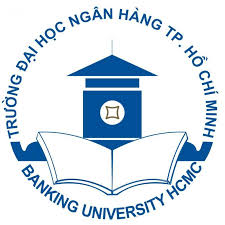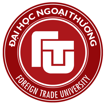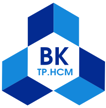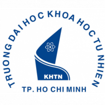Việc làm cho sinh viên Đại học Ngân hàng TPHCM
Tổng hợp việc làm cho sinh viên Đại học Ngân hàng TPHCM theo ngành nghề. Nơi sinh viên tìm việc phù hợp và định hướng nghề nghiệp.
- Ngày hết hạn: 22/11/2025
- Ngành nghề: Kinh doanh / Bán hàng / Dịch vụ
-
Khu vực làm việc: Hồ Chí Minh
 Thỏa thuận
Thỏa thuận
+ Điều hành xe vận chuyển đáp ứng nhu cầu của khách hàng.
+ Tối ưu hóa chi phí bằng cách phân tích luồng tuyến/hàng hóa để kết hợp chiều vận tải đi/về nhằm đạt được lợi nhuận tối ưu.
+ Báo cáo hàng ngày: Số lượng xe đi/ về.
+ Báo cáo hàng ngày: Chi phí, doanh thu,...
+ Báo cáo hàng tháng: Bảng kê khối lượng vận chuyển, hiệu quả doanh thu/chi phí.
+ Sắp xếp và lưu trữ chứng từ, bàn giao chứng từ.
+ Tối ưu hóa chi phí bằng cách phân tích luồng tuyến/hàng hóa để kết hợp chiều vận tải đi/về nhằm đạt được lợi nhuận tối ưu.
+ Báo cáo hàng ngày: Số lượng xe đi/ về.
+ Báo cáo hàng ngày: Chi phí, doanh thu,...
+ Báo cáo hàng tháng: Bảng kê khối lượng vận chuyển, hiệu quả doanh thu/chi phí.
+ Sắp xếp và lưu trữ chứng từ, bàn giao chứng từ.
- Ngày hết hạn: 22/11/2025
- Ngành nghề: Kinh doanh / Bán hàng / Dịch vụ
-
Khu vực làm việc: Hồ Chí Minh
 Thỏa thuận
Thỏa thuận
+ Tìm kiếm, xác định khách hàng mục tiêu.
+ Thực hiện chào bán các dịch vụ giao nhận vận tải và tiếp vận (đường bộ, đường biển nội địa/quốc tế, đường hàng không, hải quan...) của công ty.
+ Xây dựng phương án kinh doanh, soạn thảo, đàm phán hợp đồng với khách hàng.
+ Phối hợp với các bộ phận liên quan trong việc triển khai dịch vụ cho khách hàng.
+ Phát triển doanh số và thị trường theo chiến lược đề ra của công ty.
+ Theo dõi tiến độ, cập nhật tình trạng, phối hợp xử lý lô hàng theo đúng yêu cầu.
+ Thiết lập hồ sơ khách hàng và theo dõi, cập nhật hồ sơ khách hàng.
+ Duy trì kênh giao tiếp, quan hệ với khách hàng theo định kỳ và các dịp quan trọng.
+ Theo dõi, giải quyết khiếu nại khách hàng.
+ Chăm sóc khách hàng, thu hồi công nợ.
+ Báo cáo hàng tuần: tình hình những lô hàng phát sinh, pending trong tuần.
+ Báo cáo hàng tháng: Chi phí, doanh thu, Lợi nhuận.
+ Báo cáo công nợ khách hàng: hàng tháng.
+ Sắp xếp và lưu trữ chứng từ.
+ Thực hiện chào bán các dịch vụ giao nhận vận tải và tiếp vận (đường bộ, đường biển nội địa/quốc tế, đường hàng không, hải quan...) của công ty.
+ Xây dựng phương án kinh doanh, soạn thảo, đàm phán hợp đồng với khách hàng.
+ Phối hợp với các bộ phận liên quan trong việc triển khai dịch vụ cho khách hàng.
+ Phát triển doanh số và thị trường theo chiến lược đề ra của công ty.
+ Theo dõi tiến độ, cập nhật tình trạng, phối hợp xử lý lô hàng theo đúng yêu cầu.
+ Thiết lập hồ sơ khách hàng và theo dõi, cập nhật hồ sơ khách hàng.
+ Duy trì kênh giao tiếp, quan hệ với khách hàng theo định kỳ và các dịp quan trọng.
+ Theo dõi, giải quyết khiếu nại khách hàng.
+ Chăm sóc khách hàng, thu hồi công nợ.
+ Báo cáo hàng tuần: tình hình những lô hàng phát sinh, pending trong tuần.
+ Báo cáo hàng tháng: Chi phí, doanh thu, Lợi nhuận.
+ Báo cáo công nợ khách hàng: hàng tháng.
+ Sắp xếp và lưu trữ chứng từ.
- Ngày hết hạn: 22/11/2025
- Ngành nghề: Kinh doanh / Bán hàng / Dịch vụ
-
Khu vực làm việc: Hồ Chí Minh
 Thỏa thuận
Thỏa thuận
Sản xuất, lắp ráp bảng viết học sinh theo mẫu, theo yêu cầu công ty
Gia công, cắt, mài, lắp các chi tiết sản phẩm
Đảm bảo năng suất làm việc hiệu quả.
Sản xuất sản phẩm theo quy chuẩn và dưới sự hướng dẫn của quản lý xưởng.
Gia công, cắt, mài, lắp các chi tiết sản phẩm
Đảm bảo năng suất làm việc hiệu quả.
Sản xuất sản phẩm theo quy chuẩn và dưới sự hướng dẫn của quản lý xưởng.
- Ngày hết hạn: 22/11/2025
- Ngành nghề: Kinh doanh / Bán hàng / Dịch vụ
-
Khu vực làm việc: Hồ Chí Minh
 Thỏa thuận
Thỏa thuận
-Tìm kiếm khách hàng mới thông qua các kênh như: Quảng cáo, Facebook, Website,...(Được đào tạo hướng dẫn cụ thể, hỗ trợ chi phí đầu tư Marketing 70%)
- Nắm bắt nhu cầu của khách hàng, tư vấn, đàm phán, ký hợp đồng với khách hàng và hỗ trợ các thủ tục sau mua bán. (có quản lý hỗ trợ tư vấn và kèm cặp)
- Duy trì mối quan hệ tốt với các đối tác, khách hàng hiện tại và khách hàng tiềm năng theo data có sẵn từ công ty.
- Phối hợp với đội nhóm để thúc đẩy tăng doanh số bán hàng chung và báo cáo các hoạt động theo ngày, tuần, quý.
- Nắm bắt nhu cầu của khách hàng, tư vấn, đàm phán, ký hợp đồng với khách hàng và hỗ trợ các thủ tục sau mua bán. (có quản lý hỗ trợ tư vấn và kèm cặp)
- Duy trì mối quan hệ tốt với các đối tác, khách hàng hiện tại và khách hàng tiềm năng theo data có sẵn từ công ty.
- Phối hợp với đội nhóm để thúc đẩy tăng doanh số bán hàng chung và báo cáo các hoạt động theo ngày, tuần, quý.
- Ngày hết hạn: 21/11/2025
- Ngành nghề: Kinh doanh / Bán hàng / Dịch vụ
-
Khu vực làm việc: Hồ Chí Minh
 Thỏa thuận
Thỏa thuận
Giao hàng hoá mỹ phẩm (bột giặt omo, nước rửa chén sunlight, dầu gội, kem đánh răng..), sữa fami, sữa nutifood, gia vị cholimex, bánh kẹo, cafe, ngũ cốc…
Đối tượng khách hàng: đại lý, tạp hoá, kios cửa hàng, sap chợ...
Giao hàng theo tuyến bán hàng trong địa bàn thành phố Thủ Đức, 1 phần Bình Dương, có đi tỉnh (nếu có)
Phương tiện: đủ các loại xe tải từ 1.5 - 3 tấn, mỗi 1 tài xế sẽ được giao cho điều khiển và chịu trách nhiệm chăm sóc xe cho tuyến chạy cố định
Thời gian làm việc từ thứ 2 đến thứ 7: từ 7h30 đến 17h30
Đối tượng khách hàng: đại lý, tạp hoá, kios cửa hàng, sap chợ...
Giao hàng theo tuyến bán hàng trong địa bàn thành phố Thủ Đức, 1 phần Bình Dương, có đi tỉnh (nếu có)
Phương tiện: đủ các loại xe tải từ 1.5 - 3 tấn, mỗi 1 tài xế sẽ được giao cho điều khiển và chịu trách nhiệm chăm sóc xe cho tuyến chạy cố định
Thời gian làm việc từ thứ 2 đến thứ 7: từ 7h30 đến 17h30
- Ngày hết hạn: 21/11/2025
- Ngành nghề: Kinh doanh / Bán hàng / Dịch vụ
-
Khu vực làm việc: Hồ Chí Minh
 Thỏa thuận
Thỏa thuận
+ 02 nhân viên Nam + 02 nhân viên Nữ
+ Không yêu cầu kinh nghiệm – Ưu tiên sinh viên mới ra trường.
+ Đã Tốt nghiệp chuyên ngành kế toán (Đại Học – Cao Đẳng – Trung Cấp)
+ Được hướng dẫn tận tình, thực hành trên hóa đơn thực tế …
+ Được nhập liệu trên phần mểm kế toán chuyên nghiệp Smart Pro
+ Được đạo tạo trở thành 1 kế toán Chuyên Nghiệp …
+ Được hướng dẫn làm BCT – BCTC – Tổng Hợp …
+ Không yêu cầu kinh nghiệm – Ưu tiên sinh viên mới ra trường.
+ Đã Tốt nghiệp chuyên ngành kế toán (Đại Học – Cao Đẳng – Trung Cấp)
+ Được hướng dẫn tận tình, thực hành trên hóa đơn thực tế …
+ Được nhập liệu trên phần mểm kế toán chuyên nghiệp Smart Pro
+ Được đạo tạo trở thành 1 kế toán Chuyên Nghiệp …
+ Được hướng dẫn làm BCT – BCTC – Tổng Hợp …
- Ngày hết hạn: 21/11/2025
- Ngành nghề: Kinh doanh / Bán hàng / Dịch vụ
-
Khu vực làm việc: Hồ Chí Minh
 Thỏa thuận
Thỏa thuận
Giao tiếp, tư vấn sản phẩm cà phê cho khách hàng, Nhân viên tư vấn & đóng gói sản phẩm cà phê
Đóng gói cà phê sạch – đẹp – chuẩn
Cập nhật báo giá & hỗ trợ đơn hàng qua các nền tảng online/offline
Đóng gói cà phê sạch – đẹp – chuẩn
Cập nhật báo giá & hỗ trợ đơn hàng qua các nền tảng online/offline
- Ngày hết hạn: 21/11/2025
- Ngành nghề: Kinh doanh / Bán hàng / Dịch vụ
-
Khu vực làm việc: Hồ Chí Minh
 Thỏa thuận
Thỏa thuận
- Phát triển nguồn khách hàng và tìm kiếm khách hàng mới.
- Tư vấn và cung cấp hàng hóa dịch vụ đến với khách hàng.
- Tư vấn và hướng dẫn sử dụng cho khách hàng về sản phẩm, dịch vụ.
- Khảo sát thị trường về ngành hàng.
- Xây dựng phát triển ngành hàng.
- Xây dựng chính sách khuyến mãi cho hàng hóa.
- Cụ thể trao đổi trong quá trình phỏng vấn.
- Tư vấn và cung cấp hàng hóa dịch vụ đến với khách hàng.
- Tư vấn và hướng dẫn sử dụng cho khách hàng về sản phẩm, dịch vụ.
- Khảo sát thị trường về ngành hàng.
- Xây dựng phát triển ngành hàng.
- Xây dựng chính sách khuyến mãi cho hàng hóa.
- Cụ thể trao đổi trong quá trình phỏng vấn.
- Ngày hết hạn: 21/11/2025
- Ngành nghề: Kinh doanh / Bán hàng / Dịch vụ
-
Khu vực làm việc: Hồ Chí Minh
 Thỏa thuận
Thỏa thuận
Giảng dạy chương trình toán tư duy (được đào tạo)
Quản lý lớp & hỗ trợ học viên
Trao đổi tình hình học tập với phụ huynh
Đánh giá năng lực học tập của học sinh thông qua các bài kiểm tra, bài tập và hoạt động thực hành.
Cung cấp phản hồi kịp thời và hiệu quả cho học sinh về tiến độ học tập của họ
Tham gia các hoạt động chuyên môn của trung tâm như họp nhóm, bồi dưỡng chuyên môn, ...
Thực hiện các nhiệm vụ khác theo sự phân công của Ban Giám hiệu.
Địa điểm làm việc
- Hồ Chí Minh: Đường số 17, P Bình Trị Đông B, Bình Tân
- Hồ Chí Minh: Đường số 6, Thị trấn Tân Túc, Bình Chánh
Thời gian làm việc
Thứ 2 - Chủ nhật (từ 08:00 đến 10:00)
Thứ 2 - Chủ nhật (từ 14:00 đến 16:00)
Thứ 2 - Chủ nhật (từ 17:30 đến 19:30)
Nghỉ cố định 01 ngày/tuần, lịch ca dạy được phân công bởi Phòng Đào tạo
Quản lý lớp & hỗ trợ học viên
Trao đổi tình hình học tập với phụ huynh
Đánh giá năng lực học tập của học sinh thông qua các bài kiểm tra, bài tập và hoạt động thực hành.
Cung cấp phản hồi kịp thời và hiệu quả cho học sinh về tiến độ học tập của họ
Tham gia các hoạt động chuyên môn của trung tâm như họp nhóm, bồi dưỡng chuyên môn, ...
Thực hiện các nhiệm vụ khác theo sự phân công của Ban Giám hiệu.
Địa điểm làm việc
- Hồ Chí Minh: Đường số 17, P Bình Trị Đông B, Bình Tân
- Hồ Chí Minh: Đường số 6, Thị trấn Tân Túc, Bình Chánh
Thời gian làm việc
Thứ 2 - Chủ nhật (từ 08:00 đến 10:00)
Thứ 2 - Chủ nhật (từ 14:00 đến 16:00)
Thứ 2 - Chủ nhật (từ 17:30 đến 19:30)
Nghỉ cố định 01 ngày/tuần, lịch ca dạy được phân công bởi Phòng Đào tạo
- Ngày hết hạn: 21/11/2025
- Ngành nghề: Kinh doanh / Bán hàng / Dịch vụ
-
Khu vực làm việc: Hồ Chí Minh
 Thỏa thuận
Thỏa thuận
1. Tuyển dụng & Thương hiệu tuyển dụng
Lập kế hoạch tuyển dụng ngắn hạn và dài hạn theo định biên và nhu cầu nhân sự.
Quản lý và xây dựng, kiểm soát nguồn tuyển dụng, tham gia tuyển chọn và phối hợp các cấp quản lý trong quy trình phỏng vấn.
Phát triển thương hiệu tuyển dụng và các hoạt động thu hút nhân tài.
Quản lý cơ sở dữ liệu ứng viên
Làm việc với đối tác nhân sự khi cần
2. Đào tạo & Phát triển nhân sự
Tổ chức training onboarding cho nhân viên mới.
Triển khai đào tạo nội bộ, đào tạo kỹ năng, nghiệp vụ theo kế hoạch.
Xây dựng lộ trình nghề nghiệp (career path) cho các vị trí then chốt.
Phát triển và quản lý hệ thống tài liệu đào tạo.
3. Chính sách lương thưởng, C&B & Quản trị hiệu suất
Đề xuất và triển khai chính sách lương thưởng, KPI, chế độ đãi ngộ phù hợp.
Quản lý ngày nghỉ, hiệu suất, chấm công, tính lương và các khoản thưởng/phạt.
Quản lý, giải đáp các vấn đề liên quan đến BHXH, BHYT, BHTN
Xử lý các vấn đề phát sinh trong quá trình quản lý nhân sự
4. Quan hệ lao động & Giữ chân nhân sự
Giải quyết thắc mắc, khiếu nại, xử lý kỷ luật theo quy định.
Triển khai các chương trình giữ chân nhân sự.
Phát triển văn hóa doanh nghiệp, đảm bảo môi trường làm việc gắn kết, tích cực.
5. Hoạt động văn hóa & Truyền thông nội bộ
Quản lý lên kế hoạch và tổ chức các hoạt động gắn kết nhân sự
Thực hiện truyền thông nội bộ về chính sách, quy trình, sự kiện.
6. Hành chính
Quản lý hồ sơ, giấy tờ, hợp đồng, con dấu, văn bản.
Quản lý tài sản, cơ sở vật chất, mua sắm trang thiết bị văn phòng.
7. Quản lý đội ngũ HR
Quản lý và phát triển năng lực đội ngũ nhân sự
Tham mưu tổ chức, sắp xếp, tối ưu cơ cấu nhân sự
8. Thực hiện các nhiệm vụ khác theo yêu cầu của Ban Giám đốc.
Lập kế hoạch tuyển dụng ngắn hạn và dài hạn theo định biên và nhu cầu nhân sự.
Quản lý và xây dựng, kiểm soát nguồn tuyển dụng, tham gia tuyển chọn và phối hợp các cấp quản lý trong quy trình phỏng vấn.
Phát triển thương hiệu tuyển dụng và các hoạt động thu hút nhân tài.
Quản lý cơ sở dữ liệu ứng viên
Làm việc với đối tác nhân sự khi cần
2. Đào tạo & Phát triển nhân sự
Tổ chức training onboarding cho nhân viên mới.
Triển khai đào tạo nội bộ, đào tạo kỹ năng, nghiệp vụ theo kế hoạch.
Xây dựng lộ trình nghề nghiệp (career path) cho các vị trí then chốt.
Phát triển và quản lý hệ thống tài liệu đào tạo.
3. Chính sách lương thưởng, C&B & Quản trị hiệu suất
Đề xuất và triển khai chính sách lương thưởng, KPI, chế độ đãi ngộ phù hợp.
Quản lý ngày nghỉ, hiệu suất, chấm công, tính lương và các khoản thưởng/phạt.
Quản lý, giải đáp các vấn đề liên quan đến BHXH, BHYT, BHTN
Xử lý các vấn đề phát sinh trong quá trình quản lý nhân sự
4. Quan hệ lao động & Giữ chân nhân sự
Giải quyết thắc mắc, khiếu nại, xử lý kỷ luật theo quy định.
Triển khai các chương trình giữ chân nhân sự.
Phát triển văn hóa doanh nghiệp, đảm bảo môi trường làm việc gắn kết, tích cực.
5. Hoạt động văn hóa & Truyền thông nội bộ
Quản lý lên kế hoạch và tổ chức các hoạt động gắn kết nhân sự
Thực hiện truyền thông nội bộ về chính sách, quy trình, sự kiện.
6. Hành chính
Quản lý hồ sơ, giấy tờ, hợp đồng, con dấu, văn bản.
Quản lý tài sản, cơ sở vật chất, mua sắm trang thiết bị văn phòng.
7. Quản lý đội ngũ HR
Quản lý và phát triển năng lực đội ngũ nhân sự
Tham mưu tổ chức, sắp xếp, tối ưu cơ cấu nhân sự
8. Thực hiện các nhiệm vụ khác theo yêu cầu của Ban Giám đốc.
- Ngày hết hạn: 21/11/2025
- Ngành nghề: Kinh doanh / Bán hàng / Dịch vụ
-
Khu vực làm việc: Hồ Chí Minh
 Thỏa thuận
Thỏa thuận
- Pha chế và phục vụ các loại thức uống, bánh kẹo, trái cây,…cho khách hàng đến giao dịch, làm việc tại Chi nhánh;
- Chuẩn bị công tác hậu cần, phối hợp bộ phận hành chính phục vụ các chương trình gặp mặt, đào tạo, hội nghị hội thảo, lễ tân khánh tiết do Chi nhánh tổ chức;
- Sắp xếp, thu dọn, vệ sinh khu vực pha chế, khu vực phục vụ khách hàng, phòng họp ngăn nắp, sạch sẽ, đảm bảo mỹ quan;
- Thực hiện các công việc khác theo sự phân công của Lãnh đạo.
- Chuẩn bị công tác hậu cần, phối hợp bộ phận hành chính phục vụ các chương trình gặp mặt, đào tạo, hội nghị hội thảo, lễ tân khánh tiết do Chi nhánh tổ chức;
- Sắp xếp, thu dọn, vệ sinh khu vực pha chế, khu vực phục vụ khách hàng, phòng họp ngăn nắp, sạch sẽ, đảm bảo mỹ quan;
- Thực hiện các công việc khác theo sự phân công của Lãnh đạo.
- Ngày hết hạn: 20/11/2025
- Ngành nghề: Tài chính / Kế toán / Ngân hàng
-
Khu vực làm việc: Hồ Chí Minh
 18 - 20 triệu
18 - 20 triệu
1.Talent Acquisition Strategy
- Preparing and delivering yearly recruitment plans and leading recruitment teams to achieve hiring demand timely and efficiently
- Develop and implement comprehensive talent acquisition strategies aligned with business goals and industry trend
- Exploring new recruitment solutions by partnering with Recruiting team to implement those or commenting on recruitment solution that Recruiting team proposes
- Understand and implement the company’s recruitment process well
- Update and maintain candidate database, headcount tracking and staff movement records.
2.KPI ’s management
- Manage Recruitment team and be responsible for recruiting result monthly/ quarterly/ yearly efficiency and productivity
- Controlling the performance to ensure hitting KPIs and review efficiency of team members on a weekly basis
- Closely coordinating with the TA team to develop and monitor key recruitment metrics to identify and resolve issues affecting recruitment performance
- Screen CVs to shortlist the qualified candidates for the right position and coordinate with Project Manager/ Team Leader/ Operation Director to arrange interviews and follow up the offers;
- Developing, justifying, and optimizing end-to-end recruiting procedures (application, interviewing, onboarding etc.) to determine whether they can be modified for increased efficiency
- Sourcing, conducting interviews with applicants and shortlisting suitable candidates at managerial positions
4.Talent Sourcing
- Utilize innovative sourcing channels to identify and attract top talent across various industries and skill set
- Building up HR network, develop candidate resources and suitable channels for recruitment to attract qualified candidates;
5.Team’s management
- Lead, manage members of the recruitment teams for evaluating recruitment efforts
- Training, mentoring, and developing team members professionally based on company’s overview
- Other tasks assigned by line manager.
Working Hours:
Monday to Friday: 8:30 AM - 5:30 PM
Saturday: 8:00 AM - 12:00 PM
Workplace: 222 - 226 Hoang Hoa Tham Street, Ward 12, Tan Binh District, HCMC.
- Ngày hết hạn: 21/11/2025
- Ngành nghề: Kinh doanh / Bán hàng / Dịch vụ
-
Khu vực làm việc: Hồ Chí Minh
 Thỏa thuận
Thỏa thuận
- Hỗ trợ Trưởng phòng xây dựng và triển khai kế hoạch kinh doanh theo định hướng công ty.
- Quản lý, đào tạo và hỗ trợ đội ngũ chuyên viên kinh doanh trong việc tìm kiếm khách hàng và chốt giao dịch.
- Trực tiếp tham gia tìm kiếm, chăm sóc khách hàng tiềm năng và giới thiệu các sản phẩm bất động sản mà công ty phân phối.
- Theo dõi tiến độ triển khai của dự án, hỗ trợ khách hàng trong quá trình đặt cọc, ký hợp đồng, công chứng,…
- Đánh giá hiệu quả hoạt động kinh doanh, báo cáo và đề xuất giải pháp cải thiện khi cần thiết.
- Thực hiện những công việc khác theo chỉ đạo của cấp trên.
- Quản lý, đào tạo và hỗ trợ đội ngũ chuyên viên kinh doanh trong việc tìm kiếm khách hàng và chốt giao dịch.
- Trực tiếp tham gia tìm kiếm, chăm sóc khách hàng tiềm năng và giới thiệu các sản phẩm bất động sản mà công ty phân phối.
- Theo dõi tiến độ triển khai của dự án, hỗ trợ khách hàng trong quá trình đặt cọc, ký hợp đồng, công chứng,…
- Đánh giá hiệu quả hoạt động kinh doanh, báo cáo và đề xuất giải pháp cải thiện khi cần thiết.
- Thực hiện những công việc khác theo chỉ đạo của cấp trên.
- Ngày hết hạn: 21/11/2025
- Ngành nghề: Kinh doanh / Bán hàng / Dịch vụ
-
Khu vực làm việc: Hồ Chí Minh
 Thỏa thuận
Thỏa thuận
1. Tuyển dụng
- Thực hiện đầy đủ quy trình tuyển dụng, bao gồm: thu hút tìm kiếm, sàng lọc hồ sơ, liên hệ và sơ vấn, hỗ trợ phỏng vấn và tham gia vào quá trình ra quyết định tuyển dụng nhân sự.
- Đăng tuyển trên các trang website, các trang mạng xã hội (Facebook, Linkedin,...) để tìm kiếm ứng viên.
- Hỗ trợ ứng viên trong suốt quá trình tuyển dụng, tổ chức các hoạt động Onboarding để đảm bảo trải nghiệm tốt nhất cho nhân viên mới.
- Hỗ trợ xây dựng thương hiệu tuyển dụng
2. Theo dõi ngày nghỉ, hiệu suất làm việc; thực hiện chấm công, tính lương, thưởng và hoa hồng hàng tháng.
3. Hành chính – Văn hóa nội bộ
Quản lý hồ sơ nhân sự, hợp đồng lao động, hồ sơ giấy tờ, văn bản.
Đảm bảo cơ sở vật chất, môi trường làm việc; mua sắm trang thiết bị văn phòng.
Tổ chức và phối hợp các hoạt động gắn kết nội bộ
4. Khác
Thực hiện báo cáo chuyên môn và các công việc nhân sự khác theo phân công của cấp trên.
- Thực hiện đầy đủ quy trình tuyển dụng, bao gồm: thu hút tìm kiếm, sàng lọc hồ sơ, liên hệ và sơ vấn, hỗ trợ phỏng vấn và tham gia vào quá trình ra quyết định tuyển dụng nhân sự.
- Đăng tuyển trên các trang website, các trang mạng xã hội (Facebook, Linkedin,...) để tìm kiếm ứng viên.
- Hỗ trợ ứng viên trong suốt quá trình tuyển dụng, tổ chức các hoạt động Onboarding để đảm bảo trải nghiệm tốt nhất cho nhân viên mới.
- Hỗ trợ xây dựng thương hiệu tuyển dụng
2. Theo dõi ngày nghỉ, hiệu suất làm việc; thực hiện chấm công, tính lương, thưởng và hoa hồng hàng tháng.
3. Hành chính – Văn hóa nội bộ
Quản lý hồ sơ nhân sự, hợp đồng lao động, hồ sơ giấy tờ, văn bản.
Đảm bảo cơ sở vật chất, môi trường làm việc; mua sắm trang thiết bị văn phòng.
Tổ chức và phối hợp các hoạt động gắn kết nội bộ
4. Khác
Thực hiện báo cáo chuyên môn và các công việc nhân sự khác theo phân công của cấp trên.
- Ngày hết hạn: 21/11/2025
- Ngành nghề: Kinh doanh / Bán hàng / Dịch vụ
-
Khu vực làm việc: Hồ Chí Minh
 Thỏa thuận
Thỏa thuận
- Hỗ trợ khách về thông tin sản phẩm ngũ cốc chocolate
- Gợi ý sản phẩm phù hợp sức khỏe khách hàng
- Báo cáo làm việc mỗi ngày
- Gợi ý sản phẩm phù hợp sức khỏe khách hàng
- Báo cáo làm việc mỗi ngày
- Ngày hết hạn: 20/11/2025
- Ngành nghề: Kinh doanh / Bán hàng / Dịch vụ
-
Khu vực làm việc: Hồ Chí Minh
 Thỏa thuận
Thỏa thuận
Chăm sóc khách hàng nhà sách.
Kiểm kê hàng tại các nhà sách.
Làm hợp đồng, báo giá.
Lên đơn hàng.
Lập kế hoạch công tác tuần, tháng.
Thực hiện các công việc khác theo yêu cầu của Quản lý.
Dựa trên danh sách khách hàng tiềm năng và danh sách khách hàng sẵn có của Công ty cung cấp.
Kiểm kê hàng tại các nhà sách.
Làm hợp đồng, báo giá.
Lên đơn hàng.
Lập kế hoạch công tác tuần, tháng.
Thực hiện các công việc khác theo yêu cầu của Quản lý.
Dựa trên danh sách khách hàng tiềm năng và danh sách khách hàng sẵn có của Công ty cung cấp.
- Ngày hết hạn: 20/11/2025
- Ngành nghề: Kinh doanh / Bán hàng / Dịch vụ
-
Khu vực làm việc: Hồ Chí Minh
 Thỏa thuận
Thỏa thuận
công việc sẽ được hướng dẫn cụ thể khi vào nhận việc
- Ngày hết hạn: 20/11/2025
- Ngành nghề: Kinh doanh / Bán hàng / Dịch vụ
-
Khu vực làm việc: Hồ Chí Minh
 Thỏa thuận
Thỏa thuận
- Tăng trải nghiệm dịch vụ từ khách hàng tiềm năng, thu thập dữ liệu khách hàng thông qua tiếp thị trực tiếp tại các cơ sở kinh doanh quán ăn, quán nhậu, nhà hàng.
- Tư vấn khách sử dụng dịch vụ và sản phẩm do Công ty cung cấp.
- Tư vấn khách sử dụng dịch vụ và sản phẩm do Công ty cung cấp.











